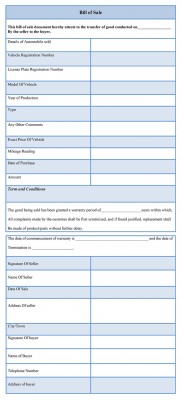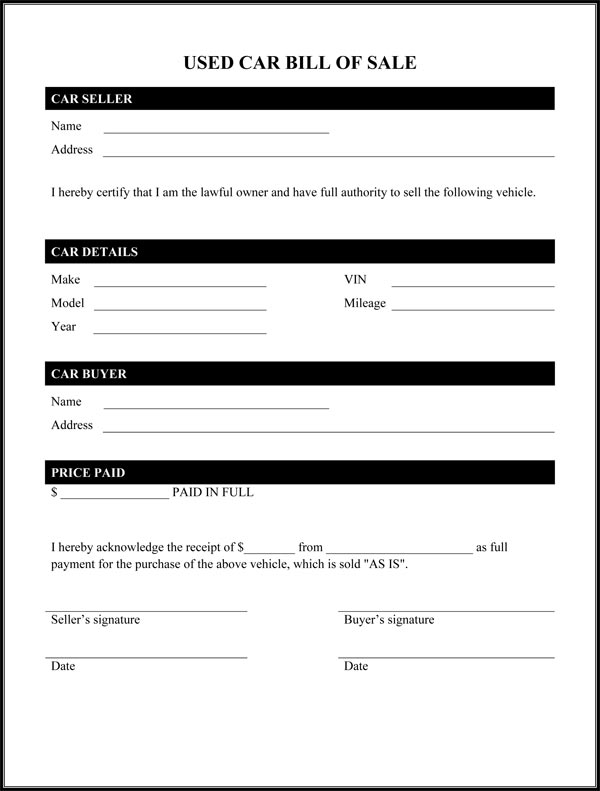
Bill of sale termsīills of sale can be straightforward, but it’s important to make sure you have a good grasp on the terms in the document before signing.īuyer: The person in the transaction that is paying the seller in exchange for an asset. Make sure to check the standards in your state to make sure the bill of sale you are drawing up is valid. All you need to do is print it and fill it out!Īs stated above, different states might require certain parts while others might not. To make your life easier, we put together a bill of sale template. Signatures of the buyer, seller, and a notary A guarantee that the asset is free from all claims and offsetsħ. A description of the asset being transferredĥ. The names and addresses of the buyer and sellerģ. Parts of a bill of saleĮach state might have some different requirements, but a bill of sale will typically include the following: 1. If you live in a state where no bill of sale is provided but it is required, make sure you include all of the necessary information when writing your own. Some states require a bill of sale while others don’t. As long as the document includes all of the necessary parts of a bill of sale and is signed by both parties and a notary, it is valid. If your state does not provide a bill of sale form, yes, you can handwrite one yourself. The document will protect both the buyer and the seller should they come across a conflict during the transaction.

In the buying process, the bill of sale is written up by the seller.

Typically, bills of sale are used to document the transaction of cars, motorcycles, or boats, but they can also be used to record other proceedings as well. Want to skip ahead to the free template? Click here.Ī bill of sale is a legal document that records the transfer of an asset from one party to another in exchange for money. When products are being exchanged between the two parties, it is safest to have a bill of sale drawn up so this doesn’t happen. However, if a conflict arises, things can get complicated. This isn’t necessarily a bad thing if two people can peacefully exchange money for an asset. When buying something used, however, the seller might lack a defined process. The salesperson tells you a price, you hand over that amount, a signature might be involved - you know the drill.

When buying something new, the establishment from which you are buying that item will lay out the process for you.


 0 kommentar(er)
0 kommentar(er)
